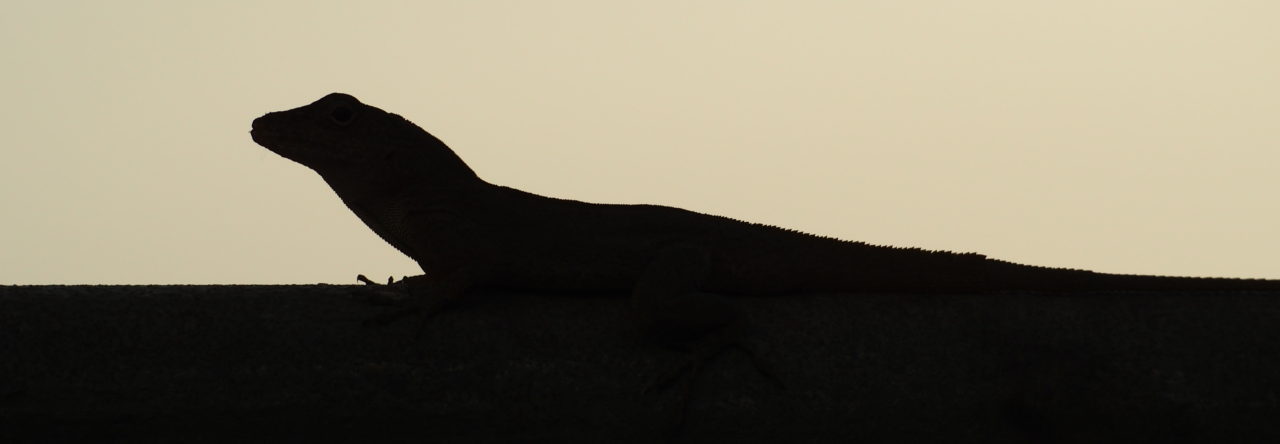We’ve had a number of posts concerning predation by curly tail lizards on brown anoles, in the Bahamas, Florida, Cuba and elsewhere. Now comes a report from near Miami that the brownies aren’t just sitting back and taking it. Rather, they’re rounding up vigilante posses to track down and consume baby curlies, hitting the predator’s population where it’s vulnerable. Ok, perhaps that’s a stretch, but in a recent note in Herpetological Review, Krysko and Wasilewski publish the first report of Anolis sagrei preying on Leiocephalus carinatus, revealing that the ecological interactions between the two species are more complicated than previously thought: we already knew that curlies prey on brown anoles and that the two species also compete for some of the same insect prey (making this an example of the phenomenon of intra-guild predation), but this study raises the possibility that the interaction–and its likely ecological and evolutionary consequences–could be substantially more complicated. One might think that because of the massive size advantage of the curly-tails, the effects must mostly be one-way; however, the massive population size differential between the two species means that brown anoles, in theory, could greatly affect curly tail populations as well. Although the effects of curly tails on brown anoles have been studied, the opposite experiment has not been done. Of course, previous work on tiny Bahamian islands indicates that curly tails substantially reduce brown anole populations, but maybe dynamics are different in larger and more complicated ecosystems. Personally, I wouldn’t bet on it, but who knows?
- Evolution in Real Time on Lizard Island - March 23, 2025
- Spider Snags Adult Anolis osa - March 22, 2025
- An Homage to the Green Anoles of New Orleans - March 21, 2025



Kevin de Queiroz
Actually, the report is of predation on Leiocephalus schreibersii, which are a bit smaller than L. carinatus, though adults are still quite a bit larger than those of Anolis sagrei.
Philip M. Fortman
In the greater Ft.Lauderdale area, Curly Tails are well established and personally observed in highly urbanized locations like shopping plazas, home improvement outside garden shop areas. I do not see brown or green anoles in the same areas. I see Basilisk lizards expanding territory more than any other species and preying on the smaller anoles.
Philip M. Fortman
Basilisks like this one are seen everywhere in most of south central Broward County, FL. They were more resistant to freezes of the lat two winters than the Iguanas, but unlike the Iguanas are predatory carnivores. My observations have been between the north/south corridors of Pine Island Rd. (W) and University Ave. (E)
Peter Mudde
I must say that my first impression after seeing that picture was of a newborn Basiliscus being eaten..
James Stroud
I have also observed (but not yet taken photos of) red-head agamas (Agama agama) feeding on brown anoles at Fairchild Botanical Gardens, may write a short note similar to this one?
Armando Pou
Very interesting report. I must say however that the curly tails are expanding rapidly and although there may be mutual predation, the curly tails seem to be having a greater impact on sagrei. Additionally, their habitats do overlap, but the curly tails seem to prefer dryer and less densely vegetated environments, the beaches, duned areas and parking lots are literally “crawling” with them. Sagrei still hold their own in well landscaped, shaded, irrigated areas.